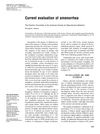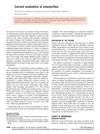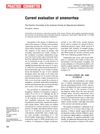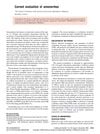Generalized Hair Follicle Hamartoma Associated With Alopecia And Myasthenia Gravis: Report Of A Second Case
May 1981
in “
Clinical and Experimental Dermatology
”
TLDR A possible link exists between hair follicle abnormalities, hair loss, and muscle weakness.
In 1981, a second case was reported of a patient exhibiting generalized hair follicle hamartoma associated with alopecia and myasthenia gravis, showing significant clinical and pathological similarities to a unique case first described in 1969 by Brown, Crounse, and Winkelmann. This case reinforced the potential link between these conditions, suggesting a possible pattern or syndrome involving hair follicle abnormalities and neuromuscular disease.




